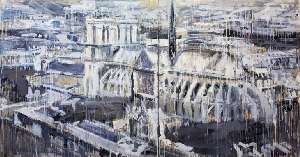
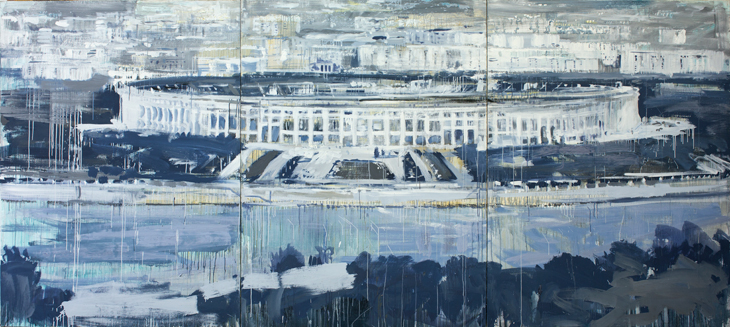
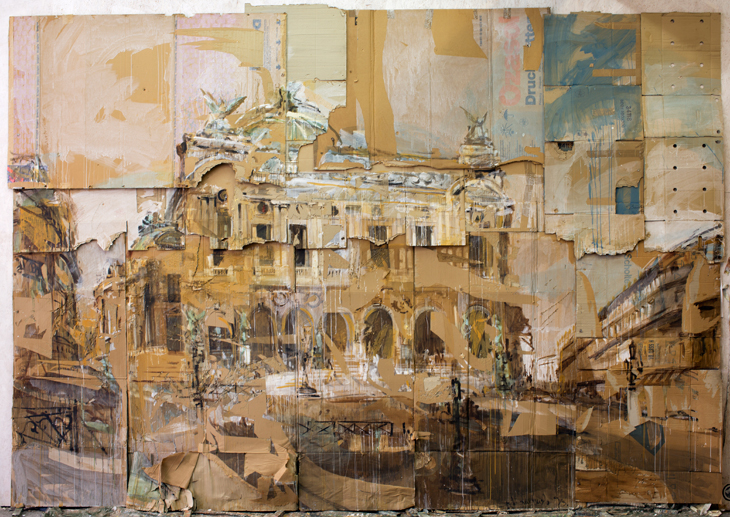
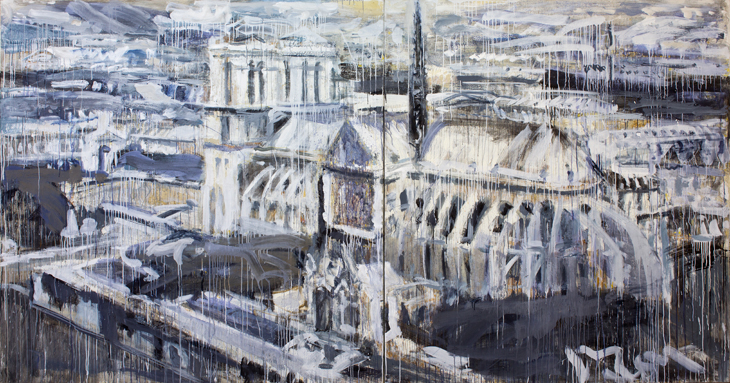
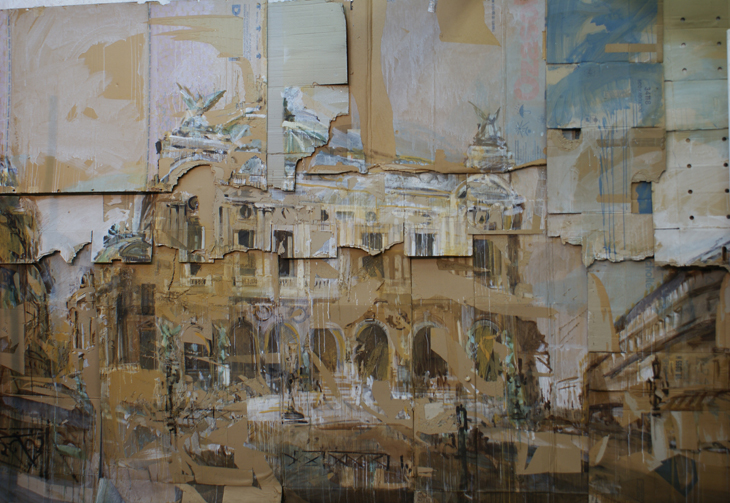
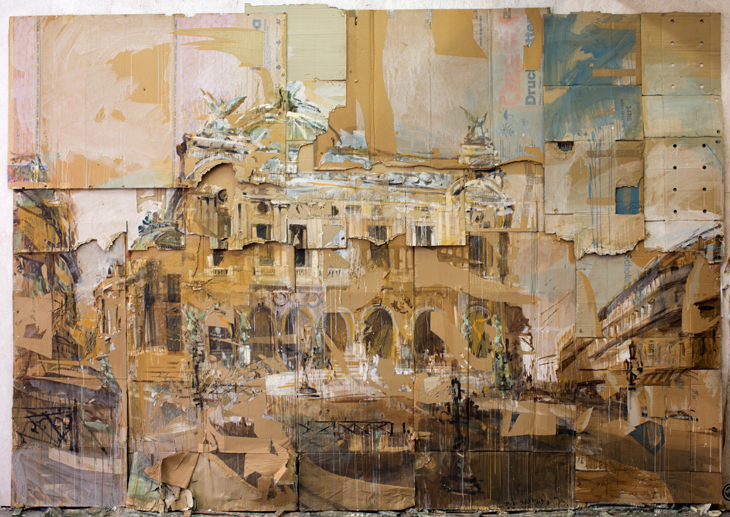
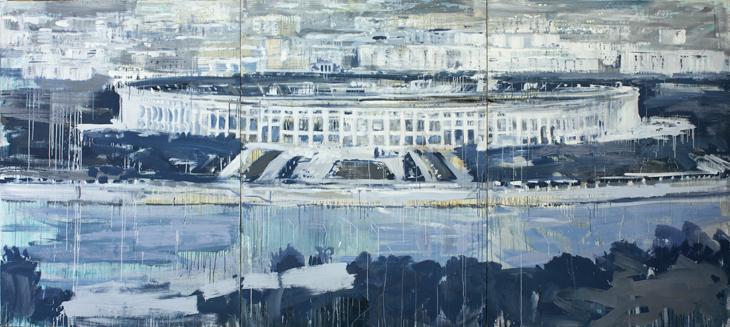
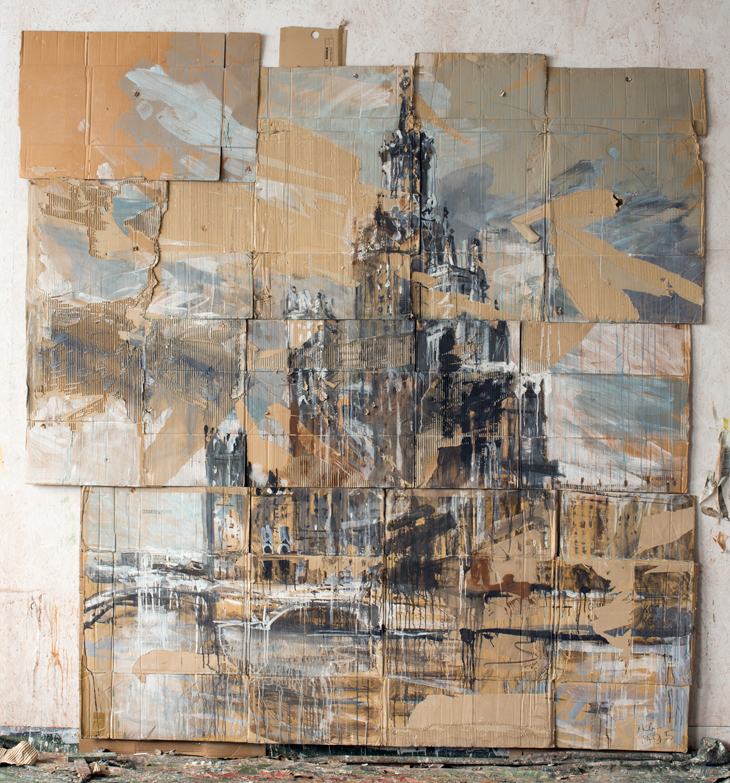
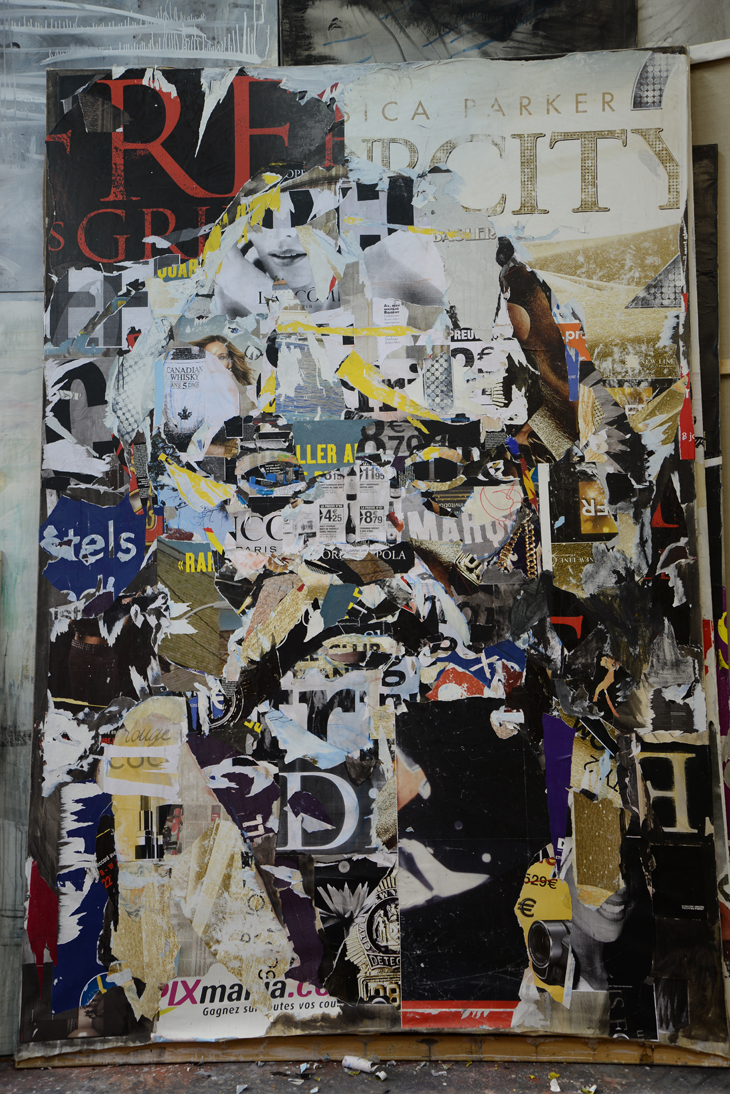
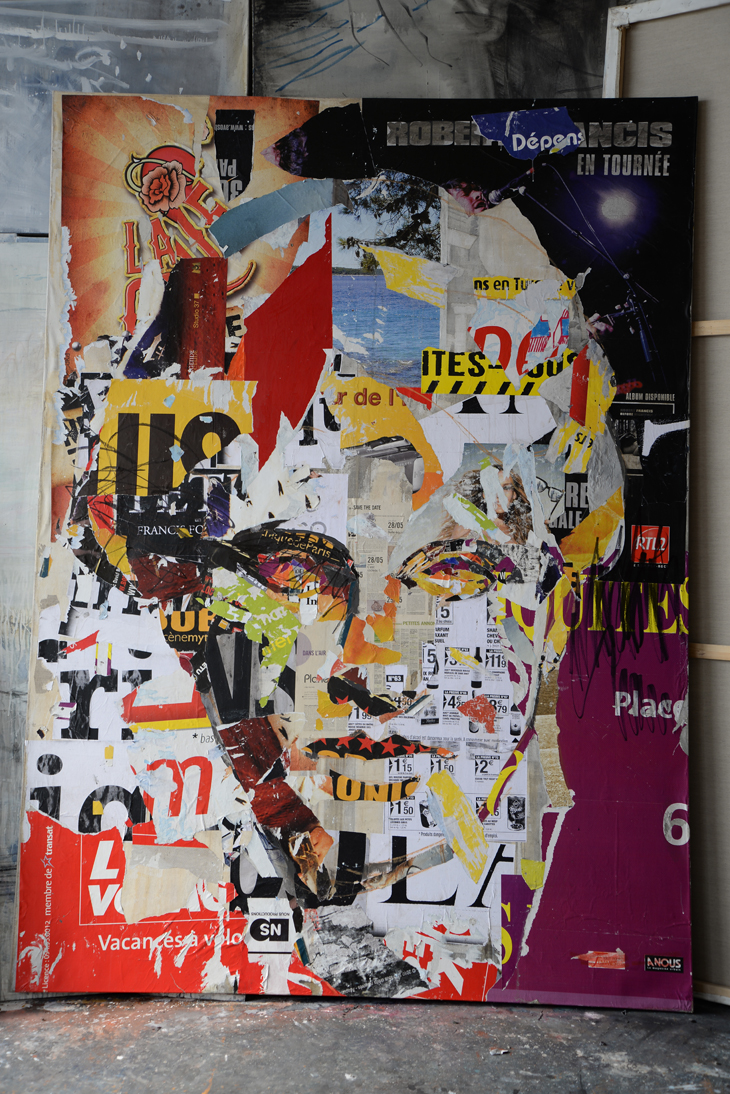
Valery Koshlyakov
Valery Koshlyakov’s large-scale cardboard paintings, collages and installations – sometimes hanging from the ceiling, sometimes made out of sticky tape placed
directly onto the gallery walls – irreverently engage with ideas of empire.
Covered in paint drips, his flattened-box panels are blown-up postcard images of state-approved classical and monumental European architecture that have more in common with street art than with photorealistic obedience. They look wet, urgent, quickly rendered, and they show his iconic subjects, from a Soviet stadium to a gothic cathedral, as a madman’s fantasy.
Koshlyakov’s re-reading of symbols of empire is all-encompassing, taking imagery from ancient ruins and sculpture to modern government buildings, but the monumental scale of his works also suggests an additional, particularly charged reference – that of Stalin-era murals and political myth-building.
Text by Lupe Nùñez-Fernández
The five-metre wide Grand Opera, Paris, one of his earlier cardboard works, depicts its subject in a myriad of dizzy unfinished details, washes and vigorous brushstrokes that turn the solid structure into a half-idealized, half-non-existing precarious castle in the air. We see the building from below, in traditional composition, but the uneven surface on which it is painted makes it fragmented, unhinged, as if it were breaking away from its support.
The work’s grand subject and pompous gestural painting accentuates the kitsch factor – this could be a slightly psychotic version of the common hack-painted tourist souvenir. Similarly with High-rise on Raushskaya Embankment, painted with tempera on cardboard, which is evocative of an avant-garde architectural masterpiece, yet the painting’s visibly flimsy support, in contrast with the monumentality of its subject, also somehow chimes in with the irony of a failed utopia.